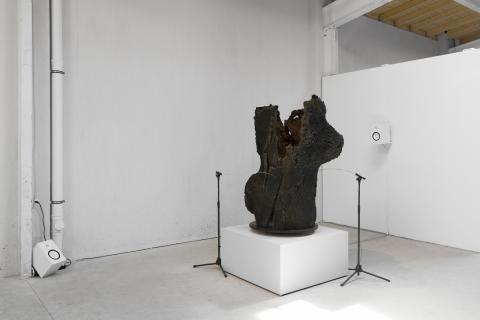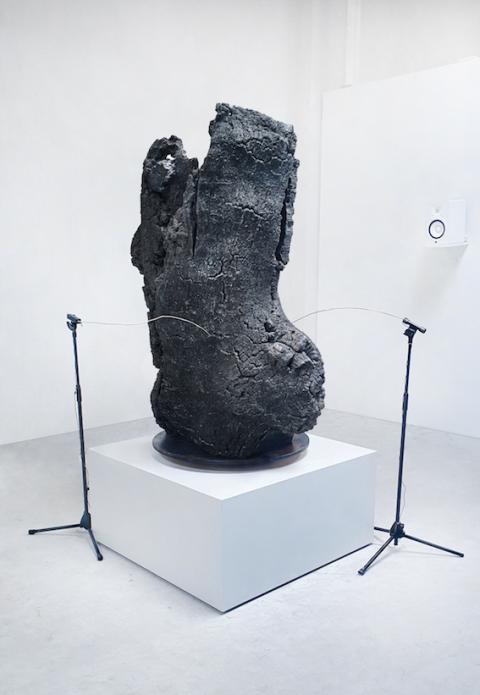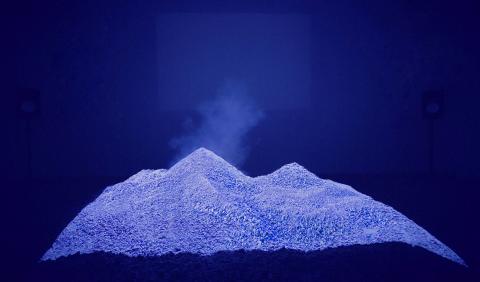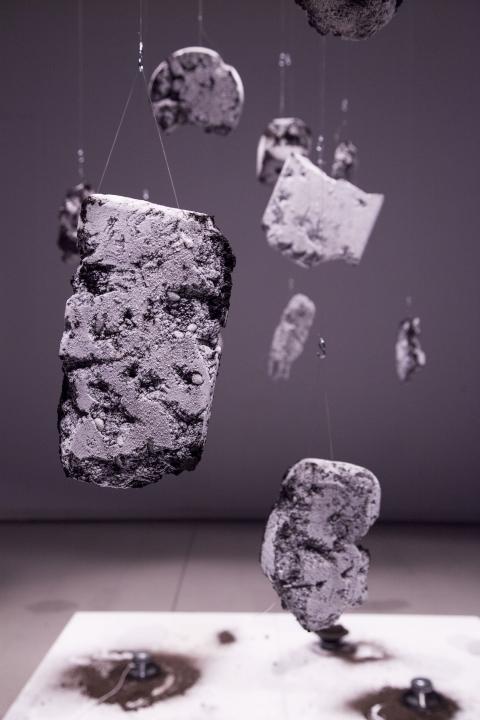Gil Delindro
@gildelindrohttp://www.delindro.com/
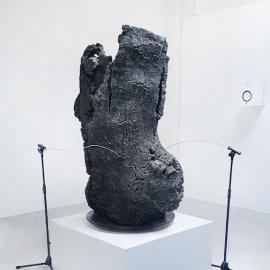

Born 1989 in Porto, Portugal. Lives and works in Berlin, Germany.
Gil Delindro‘s work is about change, decay and a possible lack of control. Sculptures that actively use the unpredictable effects of time, weather, erosion, and outdoor atmospheric conditions, opposing them to acoustic-manufactured tools.
Sound is fundamental, not as a musical element, but as a sculptural tool resulting from real-time clashes, creating pieces that have their own autonomy and change through the course of time.
A practice based on environmental site-specific research, namely on worldwide challenging landscapes, isolated communities, and extreme geological and weather patterns. Some of these include the Sahara Desert (TWOM, 2015), Rainforests of Brazil (Resiliência, 2017), Siberia, Russia (Permafrost, 2018), Vietnam ethnic villages (Blind Signal, 2019), and the Rhone Glacier (La Becque, 2019).
Without forcing direct political messages, the practice of Gil Delindro inevitably dwells under the modern relations between humans and their rapidly changing environment. Expanding on the links between ecology, geology, anthropology, and bio-acoustics, these pieces live from the constant clash between “man-made” and “biological structures”. The end result is spatial and material-conscious, interrogating in each way how the human perception of “Nature” can be challenged.
About the exhibited work
In a direct homage to the centenary craftsmanship of the Portuguese skilled Cork workers, this Sculpture re-invents that historical handcraft method, symbolically using it in an Oak tree that has been devastated by wildfire in 2021.
The tree itself has survived due to the incredible properties of its Cork skin, a natural fire- retardant and incredibly resistant organic material, that allows the tree not only to survive, but to act as a protector, by slowing down the fire progression towards other species.
The summer of 2021 has seen the most intense wildfires ever recorded, smoke clouds from Siberia reached the North Pole for the first time ever in history. In Siberia alone, 800 megatons of carbon dioxide have been released since the beginning of June, doubling last year's record. According to the European Copernicus Monitoring Service (CAMS), these fires emitted more carbon dioxide in two months than Germany in a full year.
This Sound Sculpture uses the burned Oak skin as an acoustic topography, reproducing sound through direct contact with its surface. The piece is part of a larger cross-disciplinary program, focused on the implementation of the Quercus Suber “Cork Oak” as a form of prevention and forest management. These series of new Sculptures are a symbol of resilience against wildfires, developed during a recent artistic residency in "Rural Vivo" - a local ecological and cultural association devoted to preservation programs in the UNESCO natural reserve of Gerês.
Gil Delindro‘s work is about change, decay and a possible lack of control. Sculptures that actively use the unpredictable effects of time, weather, erosion, and outdoor atmospheric conditions, opposing them to acoustic-manufactured tools.
Sound is fundamental, not as a musical element, but as a sculptural tool resulting from real-time clashes, creating pieces that have their own autonomy and change through the course of time.
A practice based on environmental site-specific research, namely on worldwide challenging landscapes, isolated communities, and extreme geological and weather patterns. Some of these include the Sahara Desert (TWOM, 2015), Rainforests of Brazil (Resiliência, 2017), Siberia, Russia (Permafrost, 2018), Vietnam ethnic villages (Blind Signal, 2019), and the Rhone Glacier (La Becque, 2019).
Without forcing direct political messages, the practice of Gil Delindro inevitably dwells under the modern relations between humans and their rapidly changing environment. Expanding on the links between ecology, geology, anthropology, and bio-acoustics, these pieces live from the constant clash between “man-made” and “biological structures”. The end result is spatial and material-conscious, interrogating in each way how the human perception of “Nature” can be challenged.
About the exhibited work
In a direct homage to the centenary craftsmanship of the Portuguese skilled Cork workers, this Sculpture re-invents that historical handcraft method, symbolically using it in an Oak tree that has been devastated by wildfire in 2021.
The tree itself has survived due to the incredible properties of its Cork skin, a natural fire- retardant and incredibly resistant organic material, that allows the tree not only to survive, but to act as a protector, by slowing down the fire progression towards other species.
The summer of 2021 has seen the most intense wildfires ever recorded, smoke clouds from Siberia reached the North Pole for the first time ever in history. In Siberia alone, 800 megatons of carbon dioxide have been released since the beginning of June, doubling last year's record. According to the European Copernicus Monitoring Service (CAMS), these fires emitted more carbon dioxide in two months than Germany in a full year.
This Sound Sculpture uses the burned Oak skin as an acoustic topography, reproducing sound through direct contact with its surface. The piece is part of a larger cross-disciplinary program, focused on the implementation of the Quercus Suber “Cork Oak” as a form of prevention and forest management. These series of new Sculptures are a symbol of resilience against wildfires, developed during a recent artistic residency in "Rural Vivo" - a local ecological and cultural association devoted to preservation programs in the UNESCO natural reserve of Gerês.

